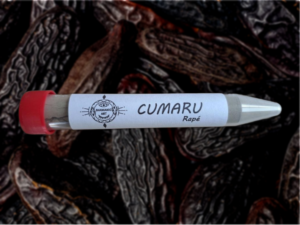No products in the cart.
✨ The Tepi Pipe: A Sacred Tool for Rapé Ceremonies ✨
Taking rapé is a deeply sacred act, intimately connected to your intention and the spiritual realm. ⚡️ It is a ceremony that requires the utmost respect and focus, and as such, it must be approached with reverence.
In traditional rapé ceremonies, a shaman delivers the snuff using a specialized applicator known as the Tepi pipe. This tool ensures that rapé is administered effectively, connecting participants to the sacred practice. Let’s explore the Tepi pipe in detail: 🕊
🥊 What is a Tepi?
The Tepi is a traditional two-person pipe specifically designed to administer rapé to another person. It features a long, curved shape, allowing the shaman to deliver the snuff comfortably without bending over the recipient. ✨
- Materials: Tepis can be made from a variety of natural materials:
- Bamboo: Lightweight, affordable, and easy to craft. The bamboo Tepi is the most common. 🌳
- Wood: Hand-carved from hardwoods like Palo Santo or Muiracatiara, offering a spiritual connection to the earth. 🔧
- Bone: Crafted from buffalo, deer, or goat bones, these are popular among traditionalists for their spiritual resonance. 🦔
- Metal: Modern stainless steel, brass, or copper Tepis are durable, hygienic, and long-lasting. 🧰
- Design: Most Tepi pipes are made with two sections, joined in a V-shape. Some feature more intricate curves for enhanced usability. 💡
🎪 Why Use a Tepi Pipe?
The Tepi pipe is revered for its role in authentic rapé ceremonies. While a kuripe allows self-administration, the Tepi is ideal for shamanic rituals, where rapé is delivered by an experienced practitioner:
- 🔎 Ceremonial Use: The Tepi ensures precise and effective administration of rapé during sacred ceremonies.
- 🌿 Portability: Smaller Tepis are perfect for traveling, while larger ones offer comfort and ease for extended ceremonies.
- ✨ Symbolic Connection: By using a Tepi, participants honor ancient traditions and connect to the energy of the shamanic lineage.
🕹 How to Use a Tepi Pipe
- Prepare: One person loads the Tepi with the right quantity of rapé powder. 🌿
- Position: The recipient tilts their head back while placing one end of the Tepi in their nostril.
- Deliver: The shaman gently blows the powder through the other end, ensuring even and intentional force. Repeat for the other nostril.
- Cleanse: After use, clean the Tepi for hygiene and preservation. 🔧
🧠 Different Types of Tepi Applicators
Tepi pipes come in various models, crafted to meet both practical and spiritual needs:
- 🌳 Bamboo Tepi: Lightweight, durable, and perfect for travelers.
- 🔨 Wooden Tepi: Hand-carved for spiritual resonance, made from sustainable hardwoods like Palo Santo.
- 🧰 Metal Tepi: Modern and hygienic, crafted from stainless steel, copper, or brass for longevity.
- 🦔 Bone Tepi: A sacred option, often crafted from buffalo or deer bones, ideal for those seeking a traditional connection.
🏰 The Role of Tepi in Kambo and Ayahuasca Ceremonies
If you participate in Kambo or Ayahuasca ceremonies, you may notice the use of rapé. 💖 Shamans often administer rapé with a Tepi pipe to prepare participants for these journeys:
- It cleanses and aligns the body, mind, and spirit.
- It enhances focus and deepens the connection to the ceremonial experience.
The Tepi becomes a bridge, guiding individuals to deeper states of healing and spiritual exploration. ⚡️
🌿 In Summary
The Tepi pipe is a sacred and essential tool for sharing rapé in ceremonial settings. Crafted with intention from bamboo, wood, metal, or bone, it represents a profound connection to tradition, healing, and spiritual alignment. Whether you’re engaging in a rapé ceremony, Kambo, or Ayahuasca journey, the Tepi honors the sacred rituals passed down through generations. ✨
📢 Ready to Order? To add this meaningful tool to your ceremonial practice, simply email us at ✉ shamanicart.eu@gmail.com. We’d love to hear from you! 🌟
Reviews
0
Rated 0 out of 5
0 customer reviews
5
0
4
0
3
0
2
0
1
0
Be the first to review “Shamanic Tepi #18” Cancel reply
Related Products
Shamanic Tepi #11
✨ The Tepi Pipe: A Sacred Tool for Rapé Ceremonies ✨ Taking rapé is a deeply sacred act, intimately connected […]
Shamanic Tepi #8
✨ The Tepi Pipe: A Sacred Tool for Rapé Ceremonies ✨ Taking rapé is a deeply sacred act, intimately connected […]
Shamanic Tepi #17
✨ The Tepi Pipe: A Sacred Tool for Rapé Ceremonies ✨ Taking rapé is a deeply sacred act, intimately connected […]
Shamanic Tepi #14
✨ The Tepi Pipe: A Sacred Tool for Rapé Ceremonies ✨ Taking rapé is a deeply sacred act, intimately connected […]
recent view product
Shamanic Kuripe #8
🌟 Introduction to Kuripe Pipes Kuripe pipes are traditional instruments used by indigenous communities in the Amazon region for administering […]
“Força Feminina” Rapé
Embracing the Essence of Womanhood with Rapé “Força Feminina” 🌺✨ At Shamanic Art, we are honored to present Rapé “Força […]
Shamanic Necklace #9
✨ The Shamanic Necklace: A Sacred Adornment of Power and Connection ✨ A shamanic necklace is a traditional piece of […]
Shamanic Bag #1
✨ The Shamanic Bag: A Sacred Tool of Power and Protection ✨ A shamanic bag, often referred to as a […]
“Cumaru” Rapé
Discovering the Grounding Power of Rapé “Cumaru”: A Blend of Strength and Stability At Shamanic Art, we are honored to […]













There are no reviews yet.